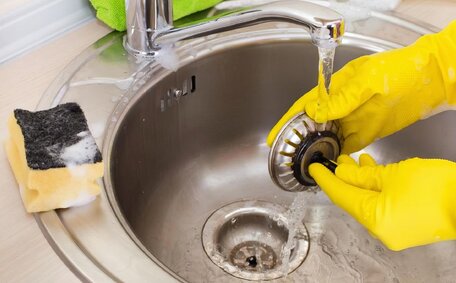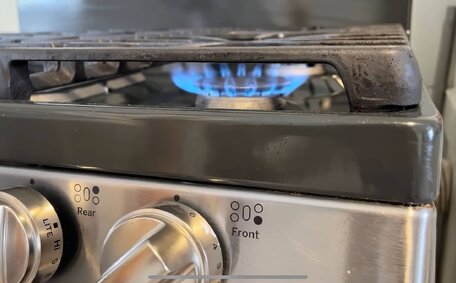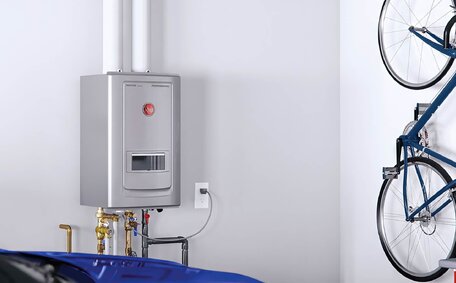What is gas line pressure testing and why is it important?
Gas pressure testing, conducted by accredited gas fitters, evaluates pipeline integrity and identifies any leaks to guarantee safety. This procedure pressurises the gas lines using air or nitrogen and measures pressure stability over time with a specialised gauge.
Conducting a pressure test gas is important for a few key reasons:
- It ensures that new or modified gas line installations are leak-free before connecting appliances, as no amount of leakage is acceptable.
- It confirms that gas pipes can endure their maximum designated pressure without the risk of developing cracks or bursting.
- It certifies the integrity of gas materials, joints and connections within the pipeline framework.
- It prevents gas leaks that lead to fires, explosions, property damage, injuries or loss of life.
Gas fitters can ascertain the system’s safety and code compliance when test pressures, usually below 3 psig, remain stable for 10 to 60 minutes. Overall, gas line pressure checks are a vital safety measure for any gas works.
Safety considerations when pressure testing gas lines
Pressure testing a gas line demands strict compliance with safety protocols due to the inherent risks of deviating from them. Below are key considerations:
- Ensure testing is conducted by licensed gas fitters, as the high-pressure gas within pipelines can be hazardous if mishandled.
- To mitigate combustion risks, securely eliminate all potential ignition sources in case of minute leaks.
- Ensure thorough ventilation by dispersing any remaining gas mixtures to the exterior. Testing should never occur in a confined space to prevent the build-up of hazardous gases.
- Use appropriate gear like goggles, gloves and ear protection.
To pass the test, pressure must not fall by over 10%, maintaining a minimum of 3 psi consistently. This indicates safety and integrity. Failing to uphold testing natural gas pressure during the test means locating and repairing leaks before retesting.
In summary, Professionals must meticulously administer pressure tests at the essential minimum levels to avoid unsafe gas infrastructures in residential and commercial properties.
Qualifications and training required to perform gas line pressure tests
Properly conducting gas line pressure tests requires training and qualifications recognised by local gas code regulations. In Australia, this typically means:
- Holding an approved gas fitting licence from state regulators.
- Possessing Certificate III in Gas Fitting.
- Having several years of practical training under an experienced professional.
- Maintaining current knowledge of gas industry standards and legal requirements in their jurisdiction.
At Pennant Hills Plumbing, our entire gas fitting team meets or exceeds all such credentials relevant to New South Wales. With the highest qualifications and thousands of hours in the field, we have full competency for correctly pressure testing gas line installations and modifications to ensure the safety of your home.
Never attempt DIY gas line tests. Improper procedures can allow dangerous gas leaks or, if not managed, could end up going put your home at risk. Trust only qualified experts like our gas fitters with your gas line needs.
Preparing to perform a gas line pressure test
Before conducting any new gas line pressure test, there are key preparations gas fitters must complete to ensure the process is carried out safely and effectively:
- Examine available building layouts to understand the gas line routes.
- Visually inspect every section gas line, including all piping, joints, connections and end points.
- Seal the conduits securely using threaded caps or, alternatively, ensure ball valves are capped.
- Place a pressure gauge on the gas line, usually fitted before the appliance regulator.
- Close the main gas supply at the gas meter, mains and any other pertinent isolation points.
- Connect a tubing from an air or inert gas source to the line through the test gauge.
For local, expert assistance preparing gas line pressure tests in Pennant Hills, contact us today on 1300 349 338 or visit our website.
Pneumatic vs hydraulic pressure testing methods
There are two main approaches used for pressure testing gas lines - Pneumatic testing with compressed air nitrogen or other inert gases like helium, and hydraulic testing with water or other liquids.
Pneumatic testing with air or nitrogen is favoured as it prevents moisture-induced corrosion in the gas system. It works by introducing air pressure or nitrogen into the piping and holding the test pressure for a set duration based on pipe specifications. Pressure drops exceeding the allowable leakage rate may indicate leaks.
Hydraulic testing involves using water or glycol solutions to maintain test pressure. It can reveal leaks faster as bubbles form when gas escapes through cracks. However water can get trapped and damage appliances.
It’s generally avoided due to the risk of electric shock in live gas systems.
Our Pennant Hills Plumbing gas fitting technicians exclusively perform pneumatic pressure tests, adhering to Australian Standards. Our digital gauges provide accuracy down to 1 psi for reliable testing. We ensure gas safety for all customers with our pneumatic pressure checking procedures.
Step-by-step process for conducting a gas line pressure test
Conducting a thorough and safe gas pressure testing sequence for your gas line entails meticulously following vital steps:
- Review piping diagrams and confirm test points, appliance connections and isolation valves on the line.
- Visually leak test the line being tested for defects and use pipe thread sealant on connections if needed.
- Attach the air hose to the test point in the gas line and connect a calibrated pressure gauge that reads at least 1.5 times the intended test pressure.
- Isolate the line from the gas supply and appliance regulators, using a ball valve or fitting threaded caps.
- Gradually introduce compressed air or nitrogen to reach the desired test pressure, then monitor for any notable pressure decline.
- Maintain a constant pressure for a duration that abides by gas regulations, conditioned by the pipe type and size requirements.
- Watch the pressure gauge continuously; overall loss must not surpass 10% of the initial test pressure.
- Check all joints, valves and materials for bubble leak indications using approved leak detection solution.
- Carefully depressurise the system after testing and vent all gas outdoors.
- Record test results including start/end pressures and duration for gas compliance reporting.
Although pressure testing might seem complex, our licenced gas fitters ensure that the pressure exceeds minimum statutory levels. For expert assistance conducting gas line pressure tests in the Pennant Hills region, contact us on 1300 349 338.
How to interpret pressure test results and locate leaks
Accurate interpretation of gas line pressure test results is crucial for assessing system integrity and locating leaks.
During the test, the pressure gauge shall remain very stable with no pressure over the target test pressure with minimal decline. Pressure reductions over 10% of the test pressure, signifying low pressure, usually still meet pass criteria. However, any steady downward trend or sudden larger pressure losses indicate escaping gas and failure.
Plumbers utilise leak detection solutions post-testing to precisely identify leakage rates across joints, valves, and materials. Bubble formation shows escaping gas. Detection methods include:
- Visual checks on connections, welds, seals and problem areas identified in test
- Ultrasonic gas detectors to hear high-frequency hisses from leaks
- Electronic gas sniffers to trace and measure emission concentrations
If leaks are found, the system must be carefully depressurised and repairs made before retesting. Once passing with zero leaks, gas appliances can be reconnected for safe functionality.
For professional assistance interpreting pressure tests and identifying any dangerous gas system leaks in the Pennant Hills area, contact our licenced team on 1300 349 338 today.
Maintaining compliance with industry regulations
Adhering to Australian standards and regulations is crucial for safely pressure testing gas lines and ensuring compliancy.
Essential compliance standards include:
- Withstanding a sustained test pressure for a defined duration without leaks, typically 3-10 psi for 10-60 minutes based on pipe specifics
- Allowing a pressure drop of less than 10% during the test
- Conducting tests only with approved equipment meeting calibration and accuracy standards
- Performing checks by fully qualified and licenced gas fitters
- Following all preparation, execution and reporting procedures per AS/NZS 5601 and state regulations
- Maintaining detailed records of tests for accountability
At Pennant Hills Plumbing, we adhere to all required compliance obligations around gas line pressure testing. Our experienced team stays up to date with the latest editions of AS/NZS 5601, AS/NZS 4645 and all local requirements. We maintain detailed checklists and records to validate our work.
For guidance navigating gas line pressure testing regulations or compliance inquiries around a system in the Pennant Hills region, contact our team on 1300 349 338 today.
When to call a professional
It’s vital to contact qualified gas fitting professionals for pressure testing gas lines in certain situations, including:
- Installations of new gas utilities, like hot water systems
- Modification or extension of existing gas pipelines
- Regular safety checks to assess the aging of gas pipe systems crucial for fuel gas distribution
- Following seismic events or incidents causing potential pipe damage
- If an active gas leak is detected in the system
- When buying or selling a property featuring gas connections, such as water heaters
Our Pennant Hills Plumbing team executes natural gas line pressure tests upholding the strictest standards. Leveraging sophisticated digital gauges and top-tier leak detection aligned with Australian gas codes, our service guarantees safety and adherence.
For professional pressure testing or any gas fitting needs in the Pennant Hills region, contact us today on 1300 349 338 or email [email protected] to schedule your appointment.






